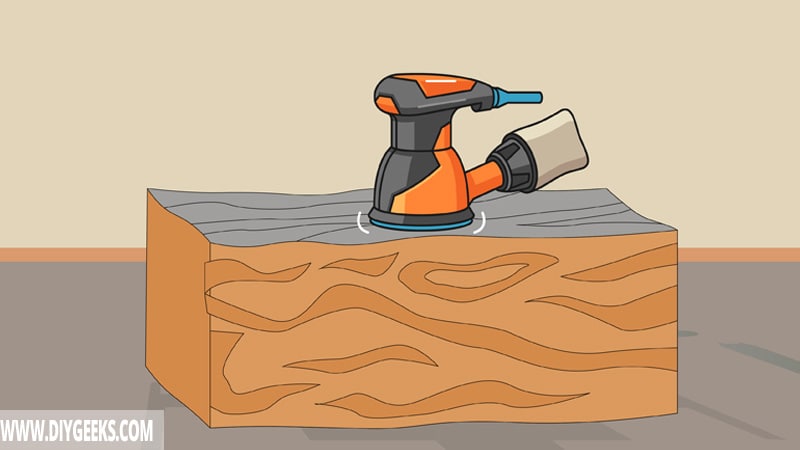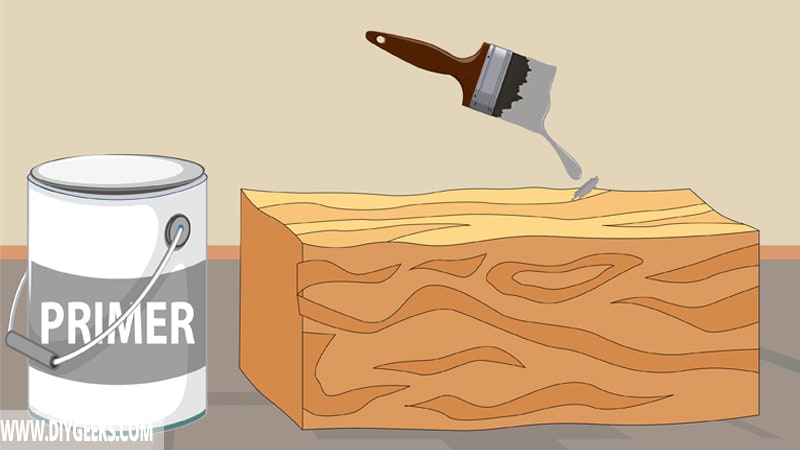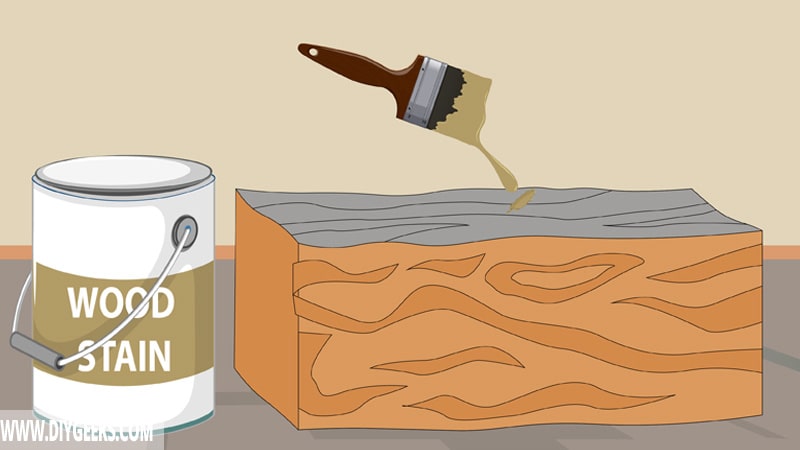Wood stain doesn’t adhere directly over primer as it can’t penetrate its finish or the surface pores.
To stain over primer, sand the surface, apply primer, and apply gel stain.
The wood stain types you can use over primer include gel stain, lacquer stain, and solid stain.
Does Wood Stain Adhere Over Primer?
Wood stain doesn’t adhere over primer as it can’t penetrate or soak into the surface pores. The finish will turn sticky or peel off if the wood stain doesn’t penetrate the surface as there will be a weak adhesion.
The purpose of a primer coating is to prep the surface before painting by providing a smooth base for the next coat to stick into. Paints stick over a primed surface as they need a smooth surface to stick to.
Wood stain is a penetrating finish and doesn’t need a smooth surface to stick to, it needs to penetrate the surface to stick. Its purpose is to soak (penetrate) the wood grain and change its color. But, if apply a primer first, the stain won’t penetrate the grain and will turn sticky.
However, penetrating stains, such as gel or lacquer stains, don’t need to penetrate a surface to stick. They stick the same way paints do. So, you can apply topical stain over a primed or painted surface.
Note: A primer coating won’t bleed through a wood stain coating. It will only bleed through if the primer coating is wet.
How To Stain Over Primer?
To stain over primer, do the following.
- Sand the Surface.
- Apply Primer.
- Apply Gel Stain.
The tools you need for this project are listed below.
- Gel Stain
- A stain-blocking primer paint
- A paintbrush
- Rags
- Medium and fine-grit sandpaper
1. Sand the Surface

Sand the surface with medium-grit sandpaper (100-grit) to remove imperfections and bumps, and create a smooth surface for the stain to adhere to.
If the wooden surface is damaged or cracked, repair the surface with a wood filler (or concrete filler).
2. Apply Primer

Apply one (1) primer coat over the surface to cover surface imperfections and create a textured coating that the wood stain can penetrate to.
3. Apply Gel Stain

Apply two (2) gel stain coats over the primer. Wait until one coat dries, wipe the excess, and apply the second coat.
Which Wood Stain Types Can You Use Over Primer?
The wood stain types you can use over primer are listed below.
1. Gel Stain
You can use gel stain over primer as it’s a topical finish that doesn’t need to penetrate a surface to adhere.
2. Lacquer Stain
You can use lacquer stain over primer as it’s a topical finish.
3. Solid Stain
You can use a solid stain over a thin primer coating. Solid stains must penetrate the surface to stick, but not as deep as other types. It only needs to soak into the wood grain a bit to stick.
So, if you apply it, it will stick better than other types, but not good enough to last on the surface.
Solid stains can also stick to some primers like shellac and latex primer. But, you must thin the base coat and apply fewer coats so the stain can have good adhesion to the surface.
Which Wood Stain Types You Can’t Use Over Primer?
The types of wood stain you can’t use over primer are as follows.
1. Regular Wood Stain
You can’t use wood stain over primer as it can’t penetrate the wood grain (or pores).
2. Deck Stain
You can’t use deck stain over primer because this stain is designed to reveal the wood grain. So, if you use it, the basecoat will prevent it from showing the wood grain.
Which Types of Primers Can You Stain Over?
The types of primers you can stain over are the following.
1. Kilz Primer
You can stain over kilz primer, but the adhesion will be weak. Kilz is a stain-blocking primer that is designed to be used under paints. It will prevent stains (or moisture) from penetrating the paint from underneath. So, if you stain over it, the adhesion will be weak. However, you can use topical or solid stain over it.
2. Shellac Primer
You can stain over shellac primer, but you must seal it to create a glazed finish. A glaze finish is when you trap one coating between two identical layers. This is done for aesthetic purposes, but it will also protect the surface.
3. Oil-Based Primer
You can only use oil-based stain over oil-based primer. That’s because they have a natural glossy finish that can prevent a water-based coat from sticking.
4. Latex Primer
You can stain over latex primer if you use topical or solid stain. Water-based coatings have a dry textured finish that allows liquid to penetrate its coating with ease.
5. White Primer
You can stain over some types of white-colored primer, but the wood grain won’t show. So, if you want to reveal the wood grain of the wood, don’t use it.


